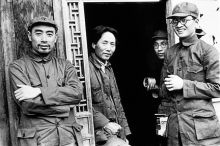In 1934, the Chinese Communist Party (CCP) began the Long March, a 9,000-kilometer retreat from its base areas in Southern China that eventually took it to the plains of Northern China. It was in Northern China that the CCP earned its reputation as one of the most effective insurgent forces of the 20th century. There, it swam as “fish” among the “sea” of the people, fighting first the Japanese from 1937 to 1945 and then against the Chinese Nationalist (Kuomintang, KMT) from 1946 to 1949 in the Chinese Civil War. Why was the CCP so successful in Northern China and so manifestly unsuccessful in Southern China? This raises a broader question: what explains the resilience of insurgent groups in wartime? Drawing on evidence from the CCP insurgency, as well as those in Malaya and Vietnam, this study shows that the persistence of an insurgency is a joint function of insurgent’s governance strategies and their ability to control territory. When insurgents establish broad social coalitions, their institutions will persist when they do not have complete control of territory because they enjoy the support of the civilian population and civilians will not defect to the incumbent. By contrast, when insurgents establish narrow coalitions, civilian compliance is a product of coercion and a defeat on the battlefield brings about a collapse of the insurgency because civilians will defect to the incumbent.

